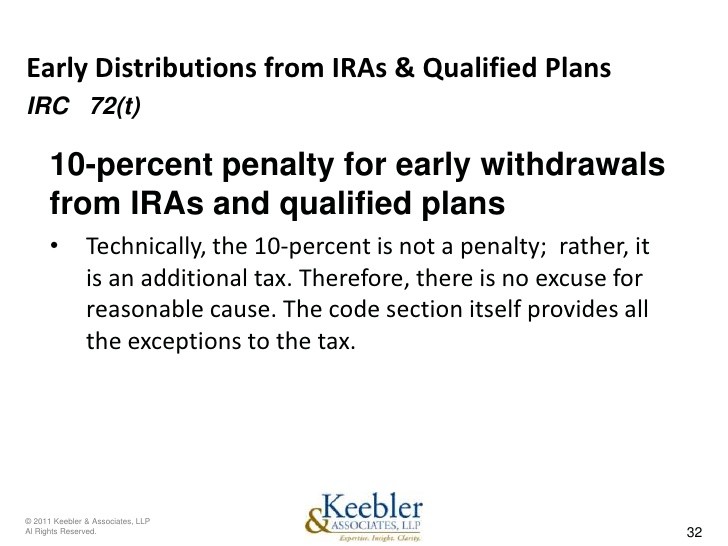Investing Strategies to Cover Early Retirement
Post on: 7 Июль, 2015 No Comment

Whether early retirement comes by choice or not, it presents many challenges for retirees. One significant issue is stretching out an individual retirement account portfolio over a longer period than a traditional retirement at a time when retirees are living longer and encountering increasingly high medical expenses.
Two areas we concentrate on when speaking to prospective early retirees are inflation and longevity, which are hidden dangers that lurk outside of the direct view of many investors, says Patrick W. Hejlik, CEO of Fourth Quadrant Asset Management in Danville, Calif. Since they don’t properly account for these factors, their assessments of future needs are likely faulty, which places them at greater risk of outliving assets.
With these issues in play, investing strategies play a paramount role in determining success in retirement. Many financial advisers recommend a balanced, diversified portfolio that aims to preserve principal while adding a necessary growth component so early retirees don’t outlive their assets or lose their purchasing power.
Varying Issues With Early Retirement
IRA investing strategies can vary depending on how early the retirement is and the circumstances surrounding it. The situation for a 58-year-old executive with a substantial retirement portfolio and company health care benefits is very different from a 62-year-old middle manager who is forced to retire because she can’t find another job.
In most cases, assets in traditional IRAs can’t be accessed without a penalty before age 59. which can pose a problem for investors retiring before that age. However, there is an exception, known as the 72(t) exemption. The exemption allows early retirees to take substantially equal, regular payments over their life expectancy.
Through a properly managed 72(t) exemption, the account holder could get to their IRA funds prior to age 59. and not have to pay the 10% early withdrawal penalty, says Patrick Hagen, business development manager with The Entrust Group in Chesterfield, Mo. Be sure to speak to your tax adviser before entering into a 72(t) exemption because once it has been initiated, it needs to remain in effect for the agreed upon amount of time.
Finding and paying for health insurance can also be an issue for early retirees, as Medicare isn’t available until age 65, meaning that more assets will be needed in retirement to pay for health insurance and health care expenses, says Dan Yu, managing principal at EisnerAmper Wealth Advisors in New York. Health insurance and health care expenses are one of the largest problems early retirees face.
Investing strategies
Dividing retirement assets into buckets to fund different portions of retirement is one strategy Yu favors. These assets might include a deferred compensation plan, a Roth IRA, a traditional IRA and taxable savings.
For an executive who retires at age 56, a deferred compensation plan could fund retirement from age 56 to age 65, followed by a traditional IRA at age 65. Such a strategy would give the IRA longer to compound and grow before its assets would be withdrawn, he adds.
For investors with Roth and traditional IRAs, it can make sense to position the traditional IRA with a 60% stock, 40% bond mix, says Yu. Distributions taken out of that account will eventually be taxed at ordinary income rates. The Roth IRA could be positioned more aggressively, with a 70% stock, 30% bond mix, since it would have a potentially longer time horizon and could be preserved for estate planning or unexpected expenses such as health care expenses further down the road.
This assumes the consumer’s time horizon and risk tolerance are appropriate for these allocations, Yu adds.

David Ogman, a financial adviser with The Shapiro Ogman Group at Morgan Stanley in Boca Raton, Fla. advocates a balanced approach to portfolio construction. To prevent inadvertently taking on more — or less — risk than you’re prepared to, your retirement savings shouldn’t be weighted too heavily in any direction, he says.
A specific investing strategy depends on an individual’s risk tolerance and goals. But broadly speaking, Ogman says interest rates are at historic lows so investors must look far and wide for growth and yield. We therefore look to create a balanced portfolio that includes equities — typically blue-chip, dividend-paying stocks — and fixed income, including corporate bonds, government bonds, floating rate or step-up bonds and certificates of deposit.
We might also diversify through the use of real estate investment trusts, master limited partnerships and commodities, Ogman adds. However, these instruments are not bond alternatives and they do carry risk.
Early retirees should be prepared to have contingencies in place should the market drop unexpectedly or some other extraordinary event occur, says Tony Fiorillo, president of Asset Management Strategies in Fishers, Ind.
Be prepared to initiate these ‘relief valves’ if a market decline happens early in retirement: Reduce your withdrawal rate, go back to work part time, postpone major purchases, resolve to spend less later or fall back on home equity, he says. All of these options can be triggered to get you to the finish line.
+ Follow Fox Business on Facebook














